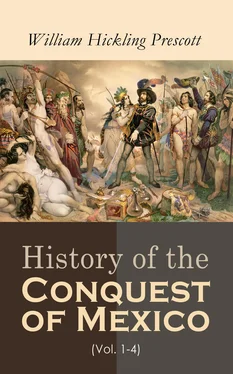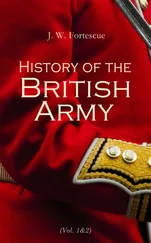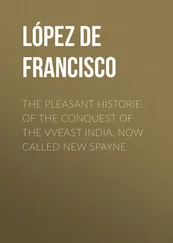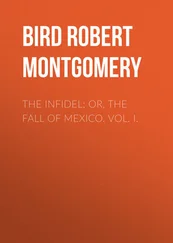Mr. Morgan was adopted into the Seneca tribe of North American Indians, and he was able to study Indian institutions from an inside point of view. Unquestionably he had a more profound knowledge of those institutions than any other scholar of his time. But he went too far when he confined the Aztecs to the narrow limits in development to which the Senecas had attained. Moreover, he does not make due allowance for the changes in development which the more favorable climate of the Mexican table-lands brought about. The “long house” of the Iroquois may have been constructed on the same general plan, but it could hardly have been mistaken for the building in which Montezuma quartered Cortés and his allies. The one meal, freshly cooked and eaten about midday, bore but little resemblance to the banquets in Mexico described with such watery appreciation by the Spanish chroniclers. (Morgan admits that these same chroniclers may be trusted when they write of food and other such palpable matters.)
But Mr. Morgan is unquestionably right in saying that Montezuma’s so-called “empire” was really a confederacy of tribes—living in pueblos, governed by a council of chiefs, and levying tribute upon other pueblos. The Aztec confederacy dominated the Mexican land as the Iroquois confederacy dominated the region between the Connecticut and the Mississippi. To assert that otherwise the two nations were alike both in their institutions and in their development is as unwarranted as to say that the governmental institutions and the political development of the United States and Venezuela are identical.
How did this confederacy come to be formed?
The earliest family group was the clan. As Sir Henry Maine points out in his Ancient Law, the individual was nothing in ancient society, the state was nothing, the family was everything. This statement holds good everywhere, for America as well as for India. A group of clans made up a phratry or brotherhood; a group of phratries made a tribe. This threefold grouping was universal. The Greek phratry, the Roman curia, the Teutonic hundred were analogous institutions. In the clans kinship was always derived through the female line. The Mutterrecht everywhere prevailed.{*}
{*} [This subject Mr. Morgan treats with a master’s hand in his Houses and House Life of the American Aborigines.]
μήτηρ μεύ τʹ ἐμέ ψησι Του ἑμμεναι ᾶυτὰρ ἐγωγε
οὐκ ὀιδ, ὀυ γαρ πώ τις ἐον γόνον ἀυτὸς ἀνέγνω
Odyssey, I, 215-6.
In that middle stage of barbarism when men began to acquire property, when warriors of valor converted to their uses what had once been common property,—herds of cattle, wives, etc.,—when polygamy became a custom, kinship came to be reckoned through the male line. In this way relationship was mightily changed. But in aboriginal America where domesticated animals were unknown this change did not take place as early as it did elsewhere. In Mexico the change did not probably come much before the century of the Conquest. Kinship was through females only. The exogamous clan (the system which required that the spouse should be taken from another clan) was the unit of the social structure, not the family.
House life found expression in architecture. One underlying principle was everywhere apparent—namely, adaptation to communal living. Gradations in culture were evident from the buildings.{*} Thus, the “long house” of the Iroquois, from fifty to one hundred feet long, divided into compartments every six or eight feet, and roughly constructed from timber and bark, betokened very different conditions from those which prevailed among the pueblos of the Zuñi Indians, with their immense structures of adobe and of stone.
{*} [This subject Mr. Morgan treats with a master’s hand in his Houses and House Life of the American Aborigines.]
In the communal house woman ruled. To her belonged the personal property. Because it was derived through her, this property remained always with the exogamous clan. Thus, marriage made very little difference to woman’s maintenance. If the husband who had come into the house proved to be lazy and otherwise worthless, divorce was easy, and he was sent back to his own.
From its own members the clan elected a sachem to attend to civil matters, and a chief to direct its military affairs.
The son could not succeed his father in these offices, but a brother might succeed a brother. (This was true of the Indian tribe to which Powhatan belonged. Had James I of England been aware of this fact, he would not have looked with such jealous eyes upon his subject Rolfe who had married the Indian princess Pocahontas.) The clan was always known by some distinctive name, usually that of some animal—beaver, fox, wolf, etc.
When the clan became so large as to be unwieldy, it split up into phratries. The “phratry” was at first a religious and social organization; and one of its chief duties was the prosecution of criminals. (The Teutonic hundred was ever ready to exact “wehrgeld.”) “The tribe” was usually the highest attainment in organization of which the aborigines of America were capable. The Mexican confederacy was the most interesting and important of their permanent organizations. The Spaniards did not understand the principles on which this confederacy was founded, because it was entirely unlike anything with which they were familiar.—M.]
Table of Contents
SUCCESSION TO THE CROWN—AZTEC NOBILITY—JUDICIAL SYSTEM—LAWS AND REVENUES—MILITARY INSTITUTIONS
THE form of government differed in the different states of Anahuac. With the Aztecs and Tezcucans it was monarchical and nearly absolute. The two nations resembled each other so much in their political institutions that one of their historians has remarked, in too unqualified a manner indeed, that what is told of one may be always understood as applying to the other. [41]I shall direct my inquiries to the Mexican polity, borrowing an illustration occasionally from that of the rival kingdom. [42]
The government was an elective monarchy. Four of the principal nobles, who had been chosen by their own body in the preceding reign, filled the office of electors, to whom were added, with merely an honorary rank, however, the two royal allies of Tezcuco and Tlacopan. The sovereign was selected from the brothers of the deceased prince, or, in default of them, from his nephews. Thus the election was always restricted to the same family. The candidate preferred must have distinguished himself in war, though, as in the case of the last Montezuma, he were a member of the priesthood. [43]This singular mode of supplying the throne had some advantages. The candidates received an education which fitted them for the royal dignity, while the age at which they were chosen not only secured the nation against the evils of minority, but afforded ample means for estimating their qualifications for the office. The result, at all events, was favorable; since the throne, as already noticed, was filled by a succession of able princes, well qualified to rule over a warlike and ambitious people. The scheme of election, however defective, argues a more refined and calculating policy than was to have been expected from a barbarous nation. [44]
The new monarch [45]was installed in his regal dignity with much parade of religious ceremony, but not until, by a victorious campaign, he had obtained a sufficient number of captives to grace his triumphal entry into the capital and to furnish victims for the dark and bloody rites which stained the Aztec superstition. Amidst this pomp of human sacrifice he was crowned. The crown, resembling a mitre in its form, and curiously ornamented with gold, gems, and feathers, was placed on his head by the lord of Tezcuco, the most powerful of his royal allies. The title of King , by which the earlier Aztec princes are distinguished by Spanish writers, is supplanted by that of Emperor in the later reigns, intimating, perhaps, his superiority over the confederated monarchies of Tlacopan and Tezcuco. [46]
Читать дальше












